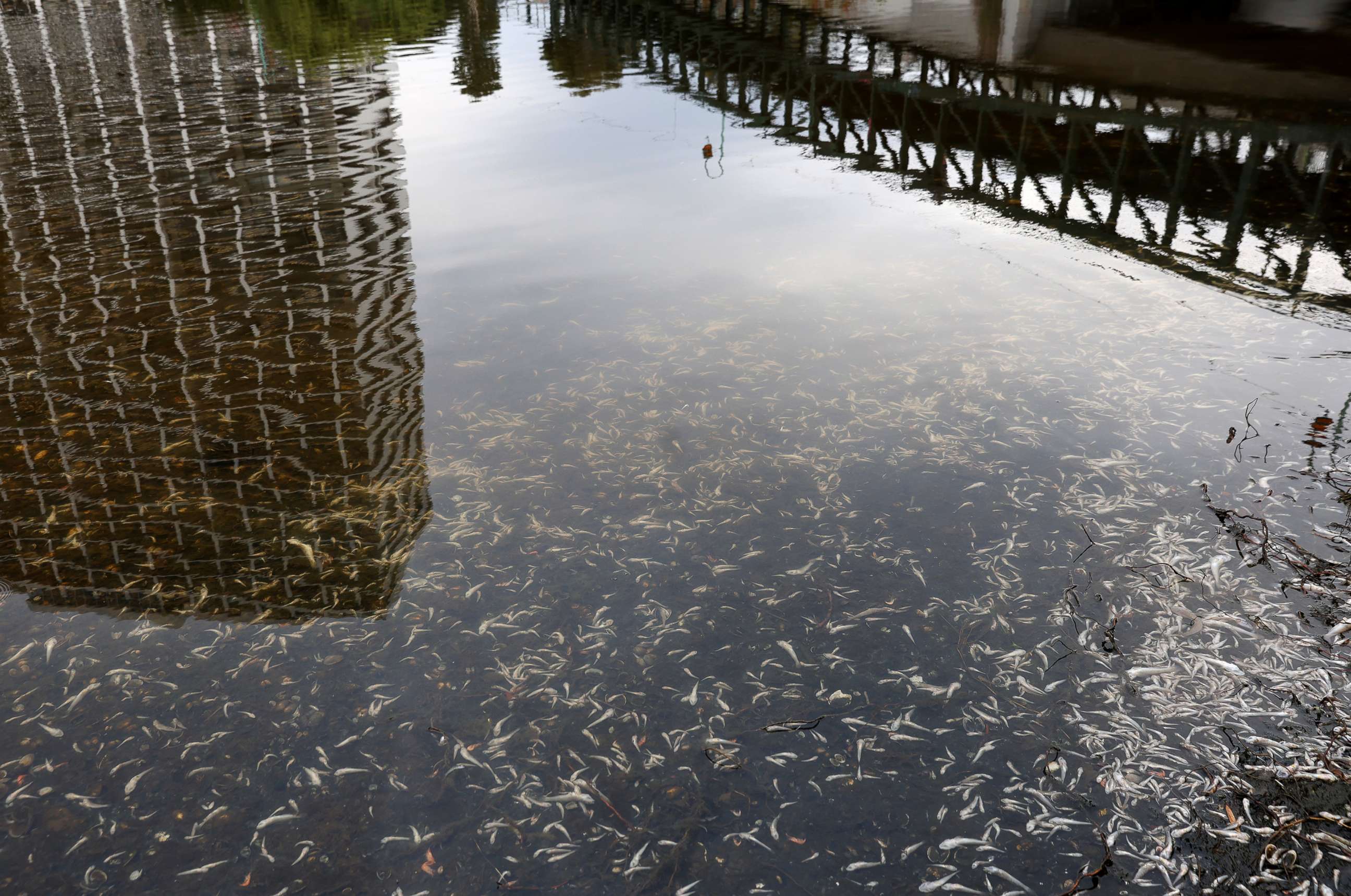Red tide on California lake causes dead fish to line shore
A bloom of this level has not occurred in the region since 2004.
Red tide on a northern California lake has caused the shore to be lined with dead fish, local experts said.
The recently red-brown, murky shores of Lake Merritt in Oakland have been linked to the largest algae bloom in the region's recent history, officials said.
According to both the California Department of Public Health and the National Oceanic and Atmospheric Administration, the dominant algae species forming the bloom is Heterosigma akashiwo.
H. akashiwo, while not usually considered an acute risk to humans, is lesser-studied species of harmful algae that emits toxins, harming fish and wildlife, the SF Baykeeper, an environmental advocacy organization, told ABC News

The SF Baykeeper said while this algae is not new to the area, a bloom of this level has not occurred in the region since 2004.
H. akashiwo has been associated with fish kills and the release of neurotoxins, the SF Baykeeper said. It also may contaminate shellfish.
The algae is not toxic to humans but it can cause skin and eye irritation, according to the San Francisco Bay Regional Water Quality Control Board.
That said, the SF Baykeeper advises individuals to be cautious when considering going in the water or consuming fish, particularly shellfish, caught in the lake.

Ian Wren, a scientist at the SF Baykeeper, has been working to better understand the algae bloom and how it happened.
"We're not quite sure what's causing it," Wren told ABC News affiliate KGO. "There are some physical factors that might have sparked this bloom such as that it's been relatively clear out, the winds have died down a little bit, we have warmer waters, however, it's really hard to associate what causes this kind of bloom."
Baykeeper executive director Sejal Choksi-Chugh said in a statement that treated sewage discharges from the Bay's 40 sewage treatment plants and the pollutants from five dirty oil refineries create conditions ideal for algal blooms.

"Baykeeper scientists have been actively working for the past five years through agency technical advisory committees to prevent large blooms of any number of potentially toxic microorganisms from becoming commonplace in the Bay," Choksi-Chugh said.
Choksi-Chugh said "excessive" sewage and refinery discharges are affecting the algae growth in the lake and called on officials to invest in water recycling to keep wastewater out of the water in the first place.
"These changes must happen fast in order to keep algal blooms like the ones cropping up right now in the Bay from taking over more regularly," Choksi-Chugh said. "Hopefully this is a wake-up call for the agency to take faster action, because consistent algal blooms in the Bay would be detrimental to wildlife and people recreating in and around the Bay."

Wren told KGO that a combination of more nutrients flowing into the water and changes in water temperature due to climate change will likely increase the possibility of blooms in the future.
"It's quite conceivable that in other years a different type of species could take off and with much more harmful consequences," Wren told KGO. "Things like higher temperatures, more nutrient upwelling from the ocean, changes in title circulation and wind patterns, these are all things that really produce a lot of unknowns but could still spark a lot of these blooms.

While the algae will eventually die off on its own, the SF Baykeeper said, it may leave more harm in its wake, as it may deplete oxygen and harm to fish and wildlife, especially in shallower areas of the Bay.
According to the Lake Merritt Institute, an organization that leads volunteer clean-ups, green algae usually grows in large quantities during the spring and early summer. The algae that dominates the shallows usually dissipates by the end of June, the organization reports.



